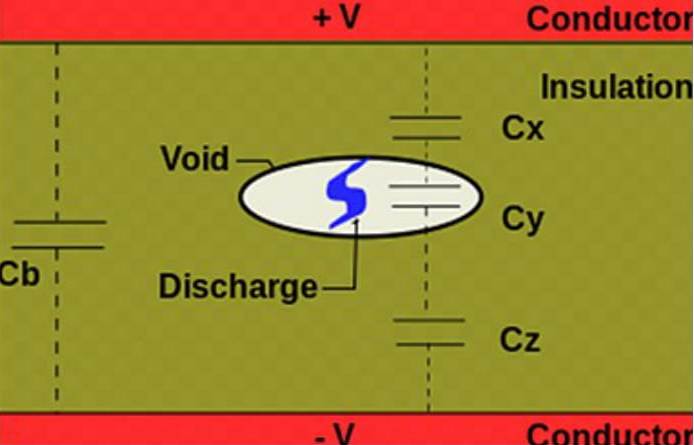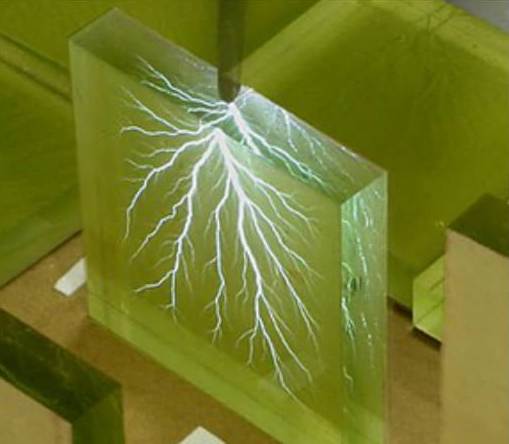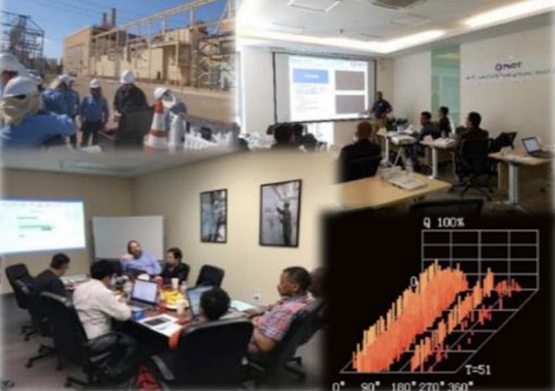- +27 79 866 5061
- pitso.masooa@resatech.co.za
Monitoring of partial discharge activity plays a significant role in condition-based maintenance strategies for MV and HV power assets in the modern industrial world. Although this sphere of engineering has evolved substantially and cemented its place comfortably in the condition monitoring programs for HV and MV insulation systems in many countries across the globe, it is yet to occupy its rightful place as the leading indicator of MV and HV insulation degradation in the broad African industry. Many power plant users are still sceptical about incorporating insulation health monitoring into their asset management programs and are highly suspicious about the integrity of online partial discharge monitoring.
This high degree of uncertainty among African power plant maintenance personnel could be attributed to many factors, i.e., lack of PD training at industry level, complexity of PD analysis, high cost of PD monitoring and diagnostic technologies, lack of transparency from the specialists regarding PD analysis and lastly, unavailability of portable and reliable routine OLPD testing devices in the market.
Resatech aims to bring an end to this unfortunate misconception about this wonderful realm of engineering by fostering a new culture of research and development through the introduction of customized training program aimed at empowering modern power plant maintenance personnel aspiring to enhance their skills in the art of medium voltage asset condition-based maintenance by employing strategies based on the insulation health management of MV power plant asset. The convention used during PD analysis by our engineers is no secret and our clients are fully informed of possible ramifications pertaining to various defects prior to assessment.
“Partial Discharge is a "localized electrical discharge that only partially bridges the insulation between conductors, and which can or cannot occur adjacent to a conductor" (IEC-60270).
When Partial Discharge occurs, various physical and chemical changes may happen, which produce emissions that we can detect, locate, and characterize to provide the information needed to prevent insulation failures of medium and high voltage electrical equipment.
PD occurs in solid, liquid, or gaseous insulating mediums. PD can occur in the form of Corona, Surface Tracking, Void, Particle, or Floating Electrodes, causing degradation of the insulation system. Once PD begins, it will always get progressively worse. 80% of electrical failures are caused by insulation breakdown or failures and PD is the very first indication that the insulation is deteriorating. NFPA 70B states that insulation breakdown is the number one cause of electrical failures.


• Light - Sometimes Visible
• Heat - Infrared
• Gases - Nitrous Oxide, etc.
• Acoustic - Audible and inaudible ultrasonic
• Electromagnetic - Transmitted UHF or induced TEV or HFCT
• Chemical - Verdigris - Nitrous Oxide + Moisture = Nitric Acid
• Airborne - Ultrasonic Microphone with 40kHz Centre Frequency
• Contact Probe - Broad Bandwidth with 20kHz - 300kHz (Detects PD in Oil or SF6 Gas)
• UHF - Ultra High Frequency: 300MHZ - 1.5 GHz
• HFCT - High Frequency Current Transformer: 500kHz - 50MHz
• TEV - Transient Earth Voltage: 3MHz - 100MHz
Transformers
Circuit Breakers
Disconnect Switches
Insulated Switchgear Bus
Bus Duct
Cable
Cable Joints(Splices)
Cable Terminations
84%
21%
15%
95%
90%
89%
91%
87%
These discharges usually occur due to the manufacturer’s defects in solid insulation systems. Commonly found in Cables, Bushings, GIS Junction insulation and rotating machines. Highly destructive to insulation systems but have slow rate of development. Characterised by low average, distributed pulse amplitude with certain symmetry on both half-cycles and fewer discharge repetitions. Voids typically continue to grow until failure. If a void PD is discovered on the insulator, the insulator should be replaced. In rotating machines and other components, the condition should be closely monitored, and trended, sufficient information collected, various influential factors considered and data correlated with dynamics to facilitate suitable maintenance intervention decision.
These type of discharges Occur in GIS (SF6 gas) and oil insulated transformers. Caused when conductive particles are left inside the insulating medium. They allow PD to jump from particle to particle. They assume no obvious polarity effects and discharges are well distributed in any phase. They also have low discharge repetition rate, no obvious rules or pattern for the pulse amplitude and discharge time interval is unstable. Discharge signal amplitude increases when improving voltage level, but the discharge interval is reduced. If detected, purifying and processing the oil or SF6 is recommended.
Corona is a discharge in air from the sharp surface of a conductor. Corona is typically not a problem besides the sound and the radio frequency emission. Corona signals have many distinct characteristics, allowing it to be easily differentiated from other PD signals. Corona disturbances do not interfere with other PD measurements. Polarity effect of this type of discharge usually appears on the negative half-cycle or positive half-cycle of the power frequency phase. It normally has a weak signal strength and a wide phase distribution with dense discharges. At higher voltage levels, discharges have also been observed in the other half-cycle, with higher amplitude, narrow phase distribution and less pulse repetitions.
Also known as "surface tracking". Discharges along the surface of solid insulation can be very destructive. Usually caused by contamination or weathering of insulator surface. It is different from corona because it tends to track to grounded metal, while corona discharges to air. Corona conditions can evolve into surface PD as they become more severe. This can happen on any MV and HV equipment when strength of insulation breaks down in high humidity environments. Poor maintenance of equipment can also lead to this phenomenon. Moisture intrusion is also common cause of surface PD.
This type of activity occurs when exposed load carrying conductor is exposed to another conductive surface of different potential not connected to said conductor. Types: conductor to Insulation and conductor to conductor. Usually caused by a manufacturing defect or non-grounded piece of metal within the field. Floating Discharge is the most common type of PD. Also caused by human interaction, such as conductors not positioned properly, inadequate gaps between conductors or between conductor and the metal casing or any other conductive object, phase leads crossing at incorrect positions with insufficient clearance, and foreign or loose object inside of insulation system. It is characterised by relatively high pulse amplitude, low discharge repetition rate and certain symmetry on the power frequency phase on both half-cycles.
• Research shows that insulation breakdown is the NO.1 cause of premature electrical failures in MV and HV systems.
• Partial discharge activity is widely regarded as the best early warning indicator of insulation degradation in MV and HV electrical systems.
• Once initiated, Partial Discharges will continue to escalate gradually until the equipment fails, thus detection, location and intervention are vital!!
• The core issue for analysing the severity of PD signals is to determine: the type of PD present, the location of the discharge, the magnitude and repetition of the discharge while taking into consideration the type of MV asset under test.

Partial discharge technology involves the study of global electrical insulation systems, knowledge and understanding of different types of MV equipment and their failure modes in relation to the PD phenomena, field data acquisition and analysis including analysis of materials, electric fields, arcing characteristics, pulse wave propagation, sensor spatial sensitivity, frequency response, equipment calibration, on-site noise and disturbance mitigation, and data interpretation. It is obvious from the above that most plant maintenance personnel will not have the time, or available energy, to pursue such a course of study.
Furthermore, no single book has exhaustively covered the entire range of topics in partial discharge technology and presented the material in a lucid manner. Therefore, an attempt has been made in this training to bring together different topics in partial discharge technology to serve as a complete course of study for modern power plant maintenance personnel involved in the condition monitoring of medium voltage assets.
Review of
Electrical
Fundamentals
Electrical Insulation
Engineering
Theory
Electrical Motor
Insulation Theory
and Application
Scientific Analysis
of the PD
Phenomenon
Basic Principles
of PD Data
Acquisition and
Analysis
Practical
Application of PD
Activity to MV
Electrical Systems
MV Power Cables
Offline & Online
PD Assessment
and Application
Overview of
Current Trends in
Asset
Maintenance